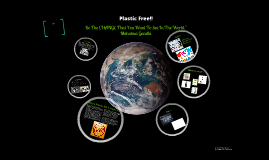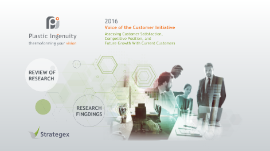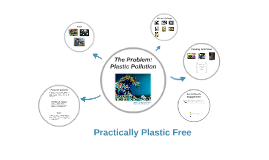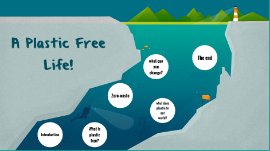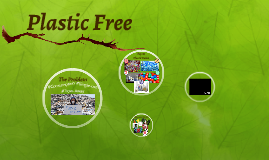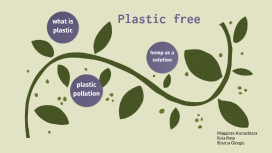PLASTIC FREE
Transcript: Plastic free Maggiore Annachiara Raia Rosa Sinatra Giorgia what is plastic Plastics are a wide range of synthetic or semi-synthetic materials that use polymers as a main ingredient. Their plasticity makes it possible for plastics to be moulded, extruded or pressed into solid objects of various shapes. This adaptability, plus a wide range of other properties, such as being light weight, durable flexible, and inexpensive to produce, has led to its widespread use. Plastics typically are made through human industrial systems. Most modern plastics are derived from fossil fuel-based chemicals like natural gas or petroleum; however, recent industrial methods use variants made from renewable materials, such as corn or cotton derivatives. About a third of plastic is used in packaging and roughly the same in buildings in applications such as piping, plumbing or vinyl siding. Other uses include automobiles, furniture, and toys. In the developing world, the applications of plastic may differ; 42% of India's consumption is used in packaging. In the medical field, polymer implants and other medical devices are derived at least partially from plastic. The world's first fully synthetic plastic was Bakelite, invented in New York in 1907, by Leo Baekeland, who coined the term "plastics". Dozens of different types of plastics are produced today, such as polyethylene, which is widely used in product packaging, and polyvinyl chloride, used in construction and pipes because of its strength and durability what is plastic Plastic codes Biodegradable plastics Biodegradable plastics are plastics that degrade (break down) upon exposure to sunlight or ultra-violet radiation; water or dampness; bacteria; enzymes; or wind abrasion. Attack by insects, such as waxworms and mealworms, can also be considered as forms of biodegradation. Aerobic degradation requires that the plastic be exposed at the surface, whereas anaerobic degradation would be effective in landfill or composting systems. Some companies produce biodegradable additives to enhance biodegradation. Although starch powder can be added as a filler to allow some plastics to degrade more easily, such treatment does not lead to complete breakdown. Some researchers have genetically engineered bacteria to synthesize completely biodegradable plastics; however, these are relatively costly at present . Plastics made from fossil fuels are over a century old. The production and development of thousands of new plastic products accelerated after World War II, transforming the modern age so profoundly that, today, life without plastic would be unrecognizable. Plastic has revolutionized medicine with life saving devices, made cars and jets lighter, saving fuel and polluting less; saved lives with helmets, incubators and equipment to make water drinkable. The comforts offered by plastic, however, have led to a throwaway culture that reveals the dark side of this material: today disposable plastics make up 40% of all those produced every year. Many of these products, for example plastic bags or food wrappers, have a life of a few minutes or hours, even if they remain in the environment for hundreds of years. plastic pollution Impacts on the marine environment The most visible and disturbing impacts of marine plastic are the ingestion, suffocation and intertwining of hundreds of marine species. Marine life, such as seabirds, whales, fish and turtles, mistake plastic waste for prey, and most starve as their stomachs are filled with plastic debris. They also suffer from lacerations, infections, impaired ability to swim and internal injuries. Floating plastics also contribute to the spread of invasive marine organisms and bacteria, which disrupt ecosystems. Impacts food and health Impacts on food and health Invisible plastic has been identified in tap water, beer, salt and is present in all samples collected in the world's oceans, including the Arctic. Several chemicals used in the production of plastics are known to be carcinogenic and interfere with the body's endocrine system, causing developmental, reproductive, neurological and immune disorders in both humans and wildlife. Toxic contaminants also accumulate on the surface of plastic materials following prolonged exposure to seawater. When marine organisms ingest plastic debris, these contaminants enter their digestive systems and overtime builds up in the food web. The transfer of contaminants between marine species and humans through the consumption of seafood has been identified as a health hazard, but has not yet been adequately studied. . Impacts on climate change The plastic, which is a petroleum product, also contributes to global warming. If plastic waste is incinerated, it releases carbon dioxide into the atmosphere, thereby increasing carbon emissions. . Impacts on tourism Plastic waste damages the aesthetic value of tourist destinations, resulting in a decrease in income related to tourism and higher economic costs related to the cleaning







